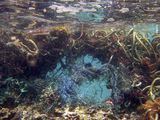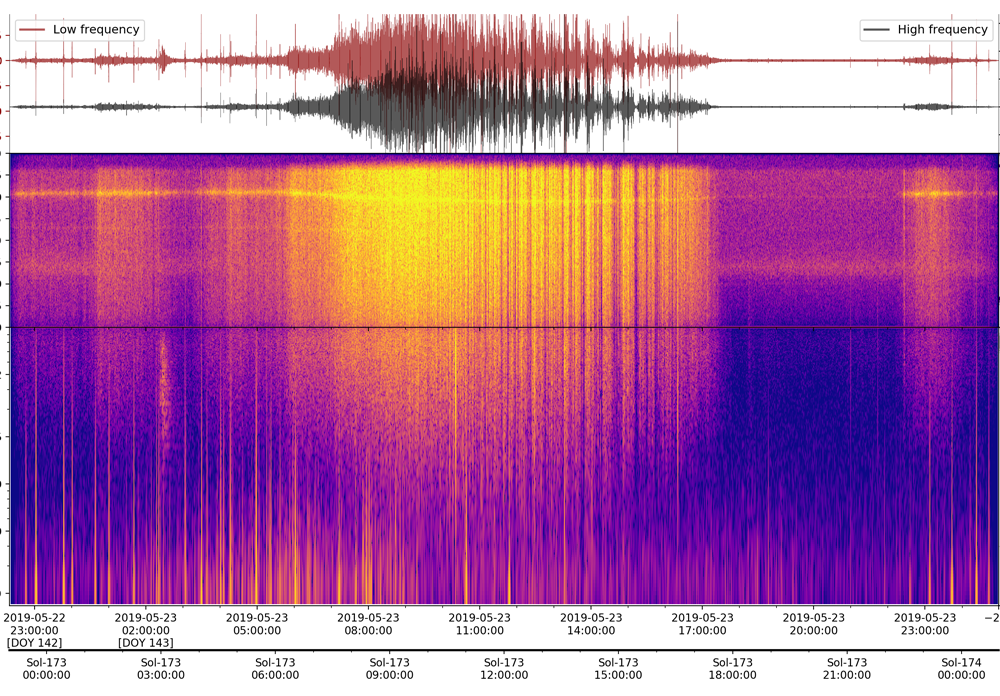 The word virus comes from the Latin term for poison. I mean, that’s not a good start. Most people don’t believe that viruses are a life form. In biology, living things are divided into 5 kingdoms: bacteria, protists, fungi, plants, animals. Viruses are not included because they lack a fundamental characteristic of living beings: the ability to reproduce by themselves. Put a virus on a table and don’t let it get in contact with anyone and it stays there without moving or changing. But in contact with the right cell, there it “animates”, reproduces and spreads. Then it can be trouble. But the luck lies in the fact that viruses are extremely specialized: a given virus only attacks certain types of cells of certain living beings. And it can also be useful to human beings…
The word virus comes from the Latin term for poison. I mean, that’s not a good start. Most people don’t believe that viruses are a life form. In biology, living things are divided into 5 kingdoms: bacteria, protists, fungi, plants, animals. Viruses are not included because they lack a fundamental characteristic of living beings: the ability to reproduce by themselves. Put a virus on a table and don’t let it get in contact with anyone and it stays there without moving or changing. But in contact with the right cell, there it “animates”, reproduces and spreads. Then it can be trouble. But the luck lies in the fact that viruses are extremely specialized: a given virus only attacks certain types of cells of certain living beings. And it can also be useful to human beings…
Science
La Terra ha un mantello fatto di uranio? Sarà per questo che fa caldo prima di un terremoto…
/https://www.lescienze.it/images/2020/01/22/115626727-38e93e57-f659-446d-a820-b5705272fd58.jpg) A friend of mine once shared me a link to a press release from the webpage of the Italian edition of Scientific American. The source was the National Institute of Nuclear Physics (INFN). The headline: “Geoneutrinos confirm that we are resting on a mantle of uranium and thorium.” I imagine any geologist would frown a bit at this statement. Why? Because the mantle is not made of uranium and thorium. Plus, this research had not found out that the mantle is composed of uranium and thorium. The research confirmed that most of the Earth’s internal heat comes from the decay of radioactive elements widespread not only in the crust (as already well known) but also in the mantle. Geoneutrinos are subatomic particles, a byproduct of radioactive decay (while neutrinos come form stars for fairly similar reasons).
A friend of mine once shared me a link to a press release from the webpage of the Italian edition of Scientific American. The source was the National Institute of Nuclear Physics (INFN). The headline: “Geoneutrinos confirm that we are resting on a mantle of uranium and thorium.” I imagine any geologist would frown a bit at this statement. Why? Because the mantle is not made of uranium and thorium. Plus, this research had not found out that the mantle is composed of uranium and thorium. The research confirmed that most of the Earth’s internal heat comes from the decay of radioactive elements widespread not only in the crust (as already well known) but also in the mantle. Geoneutrinos are subatomic particles, a byproduct of radioactive decay (while neutrinos come form stars for fairly similar reasons).
Inertial frames of reference
 I have very fond memories about my high school maths and physics teacher. He is the one responsible for my love for science and the first who tried to teach me how to use my own brain and think freely.
I have very fond memories about my high school maths and physics teacher. He is the one responsible for my love for science and the first who tried to teach me how to use my own brain and think freely.
The greatest long-term threats facing humanity
 Can we actually say anything about the far future? If we can’t predict when it will rain next month, forecasting billions of years hence might seem impossible.
Can we actually say anything about the far future? If we can’t predict when it will rain next month, forecasting billions of years hence might seem impossible.
However, not everything is as chaotic as the weather: even predictions very far ahead are sometimes possible, especially in astrophysics and cosmology. We can be confident that there will be a total solar eclipse in the UK on 23 September 2090 because the Moon, Sun and Earth move in stable, predictable orbits with very minor disturbances, and the laws of gravity are now well-tested. Similarly, we can use known astrophysics to predict what will likely happen across the Universe as it expands.
Great Pacific Garbage Patch
 “…For many people, the idea of a “garbage patch” conjures up images of an island of trash floating on the ocean. In reality, these patches are almost entirely made up of tiny bits of plastic, called microplastics. Microplastics can’t always be seen by the naked eye. Even satellite imagery doesn’t show a giant patch of garbage. The microplastics of the Great Pacific Garbage Patch can simply make the water look like a cloudy soup. This soup is intermixed with larger items, such as fishing gear and shoes.”
“…For many people, the idea of a “garbage patch” conjures up images of an island of trash floating on the ocean. In reality, these patches are almost entirely made up of tiny bits of plastic, called microplastics. Microplastics can’t always be seen by the naked eye. Even satellite imagery doesn’t show a giant patch of garbage. The microplastics of the Great Pacific Garbage Patch can simply make the water look like a cloudy soup. This soup is intermixed with larger items, such as fishing gear and shoes.”
Marsquakes Rock and Roll
 Fifty years after Apollo 11 astronauts deployed the first seismometer on the surface of the Moon, NASA InSight’s seismic experiment transmits data giving researchers the opportunity to compare marsquakes to moon and earthquakes.
Fifty years after Apollo 11 astronauts deployed the first seismometer on the surface of the Moon, NASA InSight’s seismic experiment transmits data giving researchers the opportunity to compare marsquakes to moon and earthquakes.
Seismologists operating the Marsquake Service at ETH Zurich literally rocked and rolled as they experienced, for the first time, two “marsquakes” in the university’s quake simulator. Researchers uploaded actual data from marsquakes detected on Martian solar day or Sol 128 and 173.The marsquakes were detected by the SEIS seismometer, whose highly sensitive electronics were delivered by the Aerospace Electronics and Instruments laboratory at ETH.